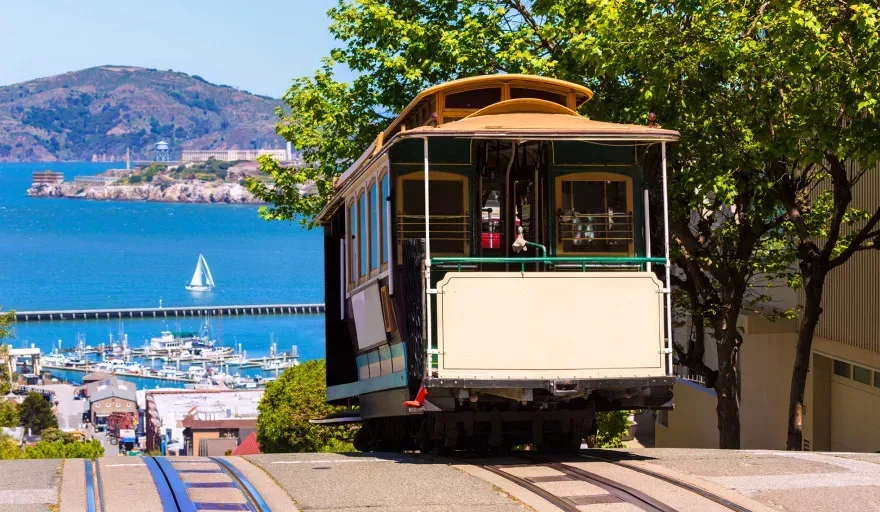Spearheading environmental leadership in the United States, we look at San Francisco and the city’s progressive and innovative attitude towards placing people and nature first.
Sustainability is, and has been, one of the main focal points in the progressive movement towards the future of companies, sectors and countries across the globe.
Environmentally friendly practices are increasingly becoming the norm and standardized within industries. The World Business Council Sustainability Development’s Vision 2050 report foresees huge changes in the industrial sector on top of a 10-fold improvement in eco-efficiency. The report also states that it is expected that companies will have managed the transition into renewable energy usage (as well as finding replacements for fossils fuels) in a practical and applicable manner.
On this international stage, the United States is currently ranked 35th out of 162 countries for sustainable development. Despite this, there is one city that is notorious for its environmentally friendly efforts.
San Francisco stands as one of the greenest cities in North America. On top of being widely regarded as a beautiful city, it is considered a substantial powerhouse on the global eco-scene. In the face of ever-growing commercialism and consumerism, San Francisco is one of the leaders of proper waste disposal, lowered carbon emissions, ecological transport and green buildings among others across the entire US space.
San Francisco was the first US city to prohibit the use of plastic bags and alongside this promoted and incorporated the mass-use of reusable tote bags, as well as those made from recycled materials and compostable bags. The city also does not allow the sale of plastic water bottles, avoiding such wastage. Through this single environmentally friendly action the city has reduced annual wastage to landfills by over 1.6 million tons; a substantial win for the eco-effort. The visual equivalent that can be drawn to mind is the fact that the Golden Gate Bridge itself weighs half of this. In this way, San Francisco has negated a considerable amount of waste ending up in landfills each year.
Across the city a substantial 77 percent of municipal waste is recycled, with composting playing a major part in the city’s methods of eco-friendly waste disposal. Approximately 14 out of 10,000 homes rely on solar energy, an amount that roughly doubles the US average, and a further 1,000 hotels are ranked as environmentally friendly institutions. Even in 2010, San Francisco’s greenhouse gas emissions were positively low sitting at 14.5 percent below its 1990 levels.
Particularly over the past two decades, San Francisco has introduced many aggressive aims and goals that have been set to curb issues such as carbon pollution and plastic waste. However, this has also managed to be economically sound and has in the long term saved the city’s residents money in the process. December of 2014 saw President Obama recognize San Francisco as a Climate Action Champion. This was because of the city’s steadfast dedication towards climate change issues and spearheading leadership across multiple substantial climate change initiatives.
The Aramis Renewable Energy Project is one example of the great lengths the city goes to reinforce its sustainability vision. This project is the work of Intersect Power, a clean infrastructure company that provides efficient, innovative, and scalable low-carbon solutions to its customers in energy and commodity sector. The Aramis Renewable Project is the company’s 100-megawatt (MW) solar farm that is planned to feature approximately 300,000 solar panels and has been suggested as starting construction during mid-2022, with operations foreseen to begin in mid-2023. It will cover 350 acres of land which will, once built, make it the largest solar farm in the San Francisco Bay Area to date. The project would be revolutionary in the renewable energy and progressive environmental space.
On a city-wide scale, San Francisco’s sustainability plans can be seen in its 2021 Climate Action Plan (CAP) Update, which is a comprehensive and equity-based set of climate mitigation targets proposing and following several routes to reduce greenhouse gas emissions, in line with and supporting the 2016 Paris Climate Agreement. During the 2018 Global Climate Action Summit hosted in the city, San Francisco pledged itself to achieving a net-zero emissions target by the year 2050. The city aims to reach the target through achieving its goals by 2030 to avoid the worst potential future impacts. These will be achieved through several goals such as reducing municipal wastage to zero, becoming 80 percent sustainable regarding transport (walking and cycling), utilizing 100 percent renewable energy, and nature-based carbon sequestration.
In the increasingly innovative and progressive sustainability stage, San Francisco is setting an incredible example for the rest of the US and indeed beyond. Actively participating in various initiatives to better the environment and leading the front in creating new strategies to promote greener urbanization and livelihoods. The importance of this sustainability centered focus is clear in the here-and-now, and present efforts towards environmentally friendly practices will echo throughout future generations who follow in the footsteps of those alive today.
































